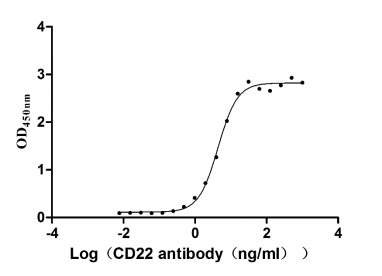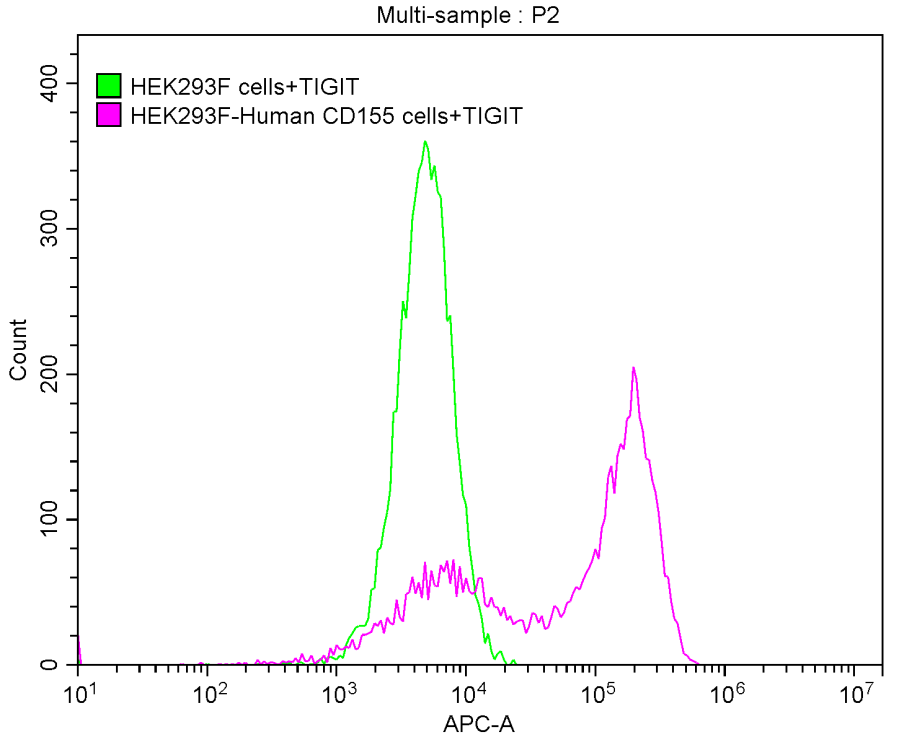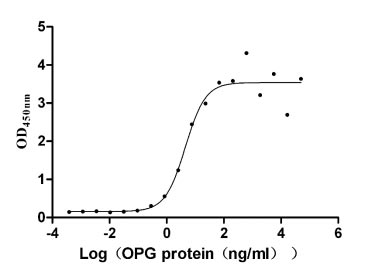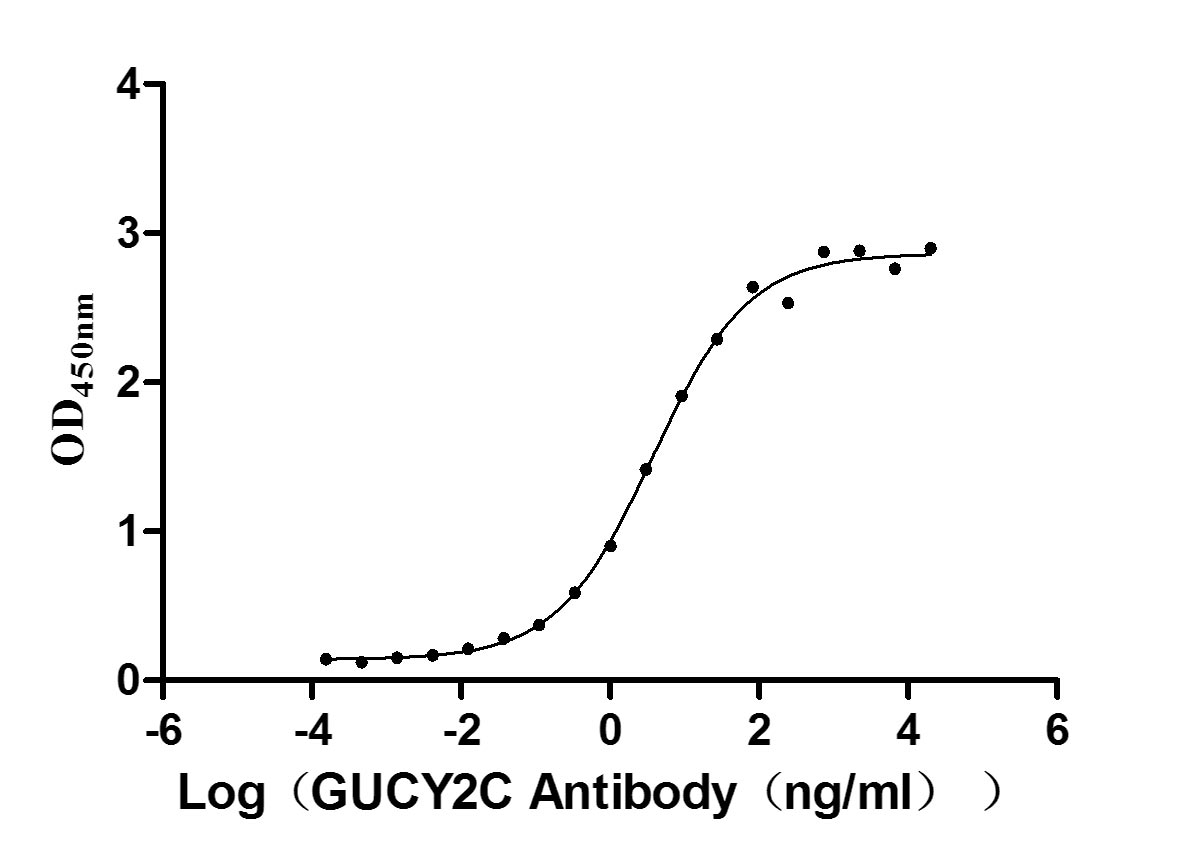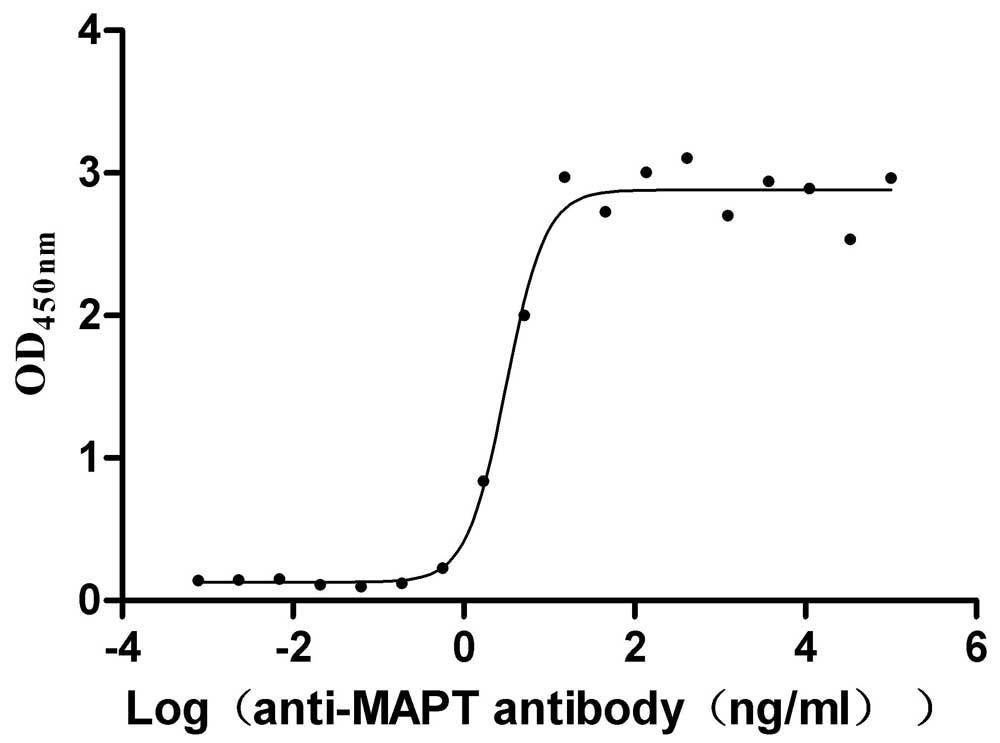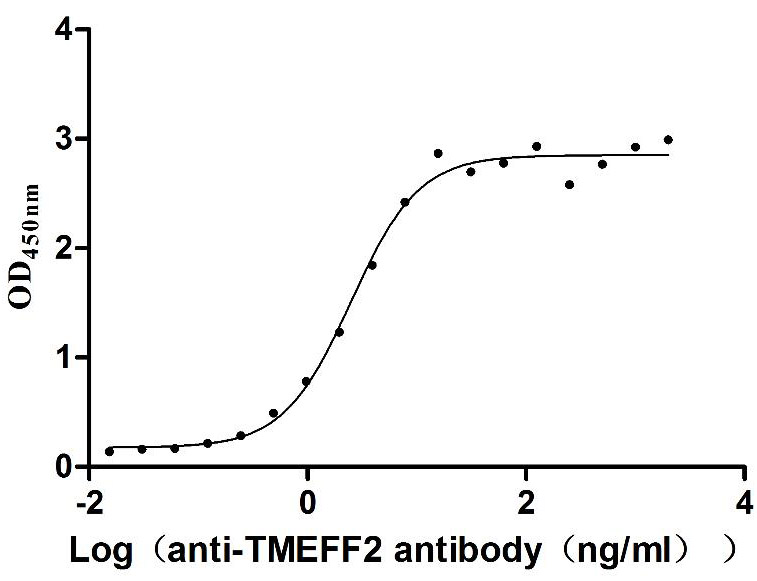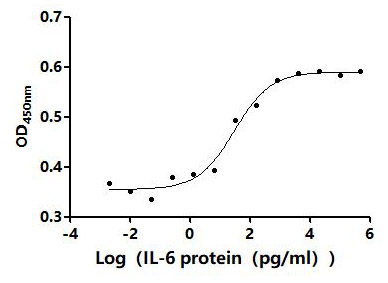Recombinant Human Transcription factor 7-like 1 (TCF7L1)
-
中文名稱:人TCF7L1重組蛋白
-
貨號(hào):CSB-YP884626HU
-
規(guī)格:
-
來源:Yeast
-
其他:
-
中文名稱:人TCF7L1重組蛋白
-
貨號(hào):CSB-EP884626HU
-
規(guī)格:
-
來源:E.coli
-
其他:
-
中文名稱:人TCF7L1重組蛋白
-
貨號(hào):CSB-EP884626HU-B
-
規(guī)格:
-
來源:E.coli
-
共軛:Avi-tag Biotinylated
E. coli biotin ligase (BirA) is highly specific in covalently attaching biotin to the 15 amino acid AviTag peptide. This recombinant protein was biotinylated in vivo by AviTag-BirA technology, which method is BriA catalyzes amide linkage between the biotin and the specific lysine of the AviTag.
-
其他:
-
中文名稱:人TCF7L1重組蛋白
-
貨號(hào):CSB-BP884626HU
-
規(guī)格:
-
來源:Baculovirus
-
其他:
-
中文名稱:人TCF7L1重組蛋白
-
貨號(hào):CSB-MP884626HU
-
規(guī)格:
-
來源:Mammalian cell
-
其他:
產(chǎn)品詳情
-
純度:>85% (SDS-PAGE)
-
基因名:
-
Uniprot No.:
-
別名:bHLHb21; HMG box transcription factor 3; HMG box transcription factor; OTTMUSP00000023419; T cell factor 3; TCF 3; TCF-3; TCF3; Tcf7l1; TF7L1_HUMAN; Transcription factor 7 like 1 (T-cell specific, HMG-box); Transcription factor 7 like 1; Transcription factor 7-like 1
-
種屬:Homo sapiens (Human)
-
蛋白長(zhǎng)度:full length protein
-
表達(dá)區(qū)域:1-588
-
氨基酸序列MPQLGGGGGG GGGGSGGGGG SSAGAAGGGD DLGANDELIP FQDEGGEEQE PSSDSASAQR DLDEVKSSLV NESENQSSSS DSEAERRPQP VRDTFQKPRD YFAEVRRPQD SAFFKGPPYP GYPFLMIPDL SSPYLSNGPL SPGGARTYLQ MKWPLLDVPS SATVKDTRSP SPAHLSNKVP VVQHPHHMHP LTPLITYSND HFSPGSPPTH LSPEIDPKTG IPRPPHPSEL SPYYPLSPGA VGQIPHPLGW LVPQQGQPMY SLPPGGFRHP YPALAMNASM SSLVSSRFSP HMVAPAHPGL PTSGIPHPAI VSPIVKQEPA PPSLSPAVSV KSPVTVKKEE EKKPHVKKPL NAFMLYMKEM RAKVVAECTL KESAAINQIL GRKWHNLSRE EQAKYYELAR KERQLHSQLY PTWSARDNYG KKKKRKREKQ LSQTQSQQQV QEAEGALASK SKKPCVQYLP PEKPCDSPAS SHGSMLDSPA TPSAALASPA APAATHSEQA QPLSLTTKPE TRAQLALHSA AFLSAKAAAS SSGQMGSQPP LLSRPLPLGS MPTALLASPP SFPATLHAHQ ALPVLQAQPL SLVTKSAH
-
蛋白標(biāo)簽:Tag?type?will?be?determined?during?the?manufacturing?process.
The tag type will be determined during production process. If you have specified tag type, please tell us and we will develop the specified tag preferentially. -
產(chǎn)品提供形式:Lyophilized powder
Note: We will preferentially ship the format that we have in stock, however, if you have any special requirement for the format, please remark your requirement when placing the order, we will prepare according to your demand. -
復(fù)溶:We recommend that this vial be briefly centrifuged prior to opening to bring the contents to the bottom. Please reconstitute protein in deionized sterile water to a concentration of 0.1-1.0 mg/mL.We recommend to add 5-50% of glycerol (final concentration) and aliquot for long-term storage at -20℃/-80℃. Our default final concentration of glycerol is 50%. Customers could use it as reference.
-
儲(chǔ)存條件:Store at -20°C/-80°C upon receipt, aliquoting is necessary for mutiple use. Avoid repeated freeze-thaw cycles.
-
保質(zhì)期:The shelf life is related to many factors, storage state, buffer ingredients, storage temperature and the stability of the protein itself.
Generally, the shelf life of liquid form is 6 months at -20°C/-80°C. The shelf life of lyophilized form is 12 months at -20°C/-80°C. -
貨期:Delivery time may differ from different purchasing way or location, please kindly consult your local distributors for specific delivery time.Note: All of our proteins are default shipped with normal blue ice packs, if you request to ship with dry ice, please communicate with us in advance and extra fees will be charged.
-
注意事項(xiàng):Repeated freezing and thawing is not recommended. Store working aliquots at 4°C for up to one week.
-
Datasheet :Please contact us to get it.
相關(guān)產(chǎn)品
靶點(diǎn)詳情
-
功能:Participates in the Wnt signaling pathway. Binds to DNA and acts as a repressor in the absence of CTNNB1, and as an activator in its presence. Necessary for the terminal differentiation of epidermal cells, the formation of keratohyalin granules and the development of the barrier function of the epidermis. Down-regulates NQO1, leading to increased mitomycin c resistance.
-
基因功能參考文獻(xiàn):
- HIPK2 up-regulates transcription by phosphorylating TCF3, a transcriptional repressor, but inhibits transcription by phosphorylating LEF1, a transcriptional activator. PMID: 21285352
- Tcf3is partially responsible for the butyrate-resistant phenotype of colorectal cancer cells, as this DNA-binding protein suppresses the hyperinduction of Wnt activity by butyrate. PMID: 23063976
- Our results identify TCF3 as a central regulator of tumor growth and initiation. PMID: 23090119
- TCF3, a novel positive regulator of osteogenesis, plays a crucial role in miR-17 modulating the diverse effect of canonical Wnt signaling in different microenvironments. PMID: 23492770
- TCF/TLE tetramer complex promotes structural transitions of chromatin to mediate repression. PMID: 24596249
- These results indicate that a dynamic interplay of TCF transcription factors governs MYC gene expression in colorectal cancers. PMID: 25659031
- TCF7L1, a Wnt pathway repressor, buffers CTNNB1/TCF target gene expression to promote CRC growth PMID: 27333864
- TCF7L1 plays a major role in maintaining hESC pluripotency, which has implications for human development during gastrulation PMID: 29361574
- Through transcriptome profiling and combined gain- and loss-of-function studies, the authors identified LCN2 as a major downstream effector of TCF7L1 that drives tumor growth. PMID: 28467300
- report the identification of two independent missense variants in human TCF7L1, p.R92P and p.R400Q, in a cohort of patients with forebrain and/or pituitary defects PMID: 26764381
- No difference in nuclear beta-catenin signal intensity was found, which may be caused by an alteration in Wnt pathway in microsatellite stable sporadic tumors by unknown mechanisms leading to lower TCF-3, 4 protein expression. PMID: 20532534
顯示更多
收起更多
-
亞細(xì)胞定位:Nucleus.
-
蛋白家族:TCF/LEF family
-
組織特異性:Detected in hair follicles and skin keratinocytes, and at lower levels in stomach epithelium.
-
數(shù)據(jù)庫(kù)鏈接:
Most popular with customers
-
Recombinant Human B-cell receptor CD22 (CD22), partial (Active)
Express system: Mammalian cell
Species: Homo sapiens (Human)
-
Recombinant Human T-cell immunoreceptor with Ig and ITIM domains (TIGIT), partial (Active)
Express system: Mammalian cell
Species: Homo sapiens (Human)
-
Recombinant Human Tumor necrosis factor receptor superfamily member 11B (TNFRSF11B) (Active)
Express system: Mammalian cell
Species: Homo sapiens (Human)
-
Recombinant Human Heat-stable enterotoxin receptor (GUCY2C), partial (Active)
Express system: Mammalian cell
Species: Homo sapiens (Human)
-
Recombinant Macaca mulatta Microtubule-associated protein tau (MAPT) (Active)
Express system: Mammalian cell
Species: Macaca mulatta (Rhesus macaque)
-
Recombinant Dog B-lymphocyte antigen CD20 (MS4A1)-VLPs (Active)
Express system: Mammalian cell
Species: Canis lupus familiaris (Dog) (Canis familiaris)
-
Recombinant Human Tomoregulin-2 (TMEFF2), partial (Active)
Express system: Mammalian cell
Species: Homo sapiens (Human)
-


